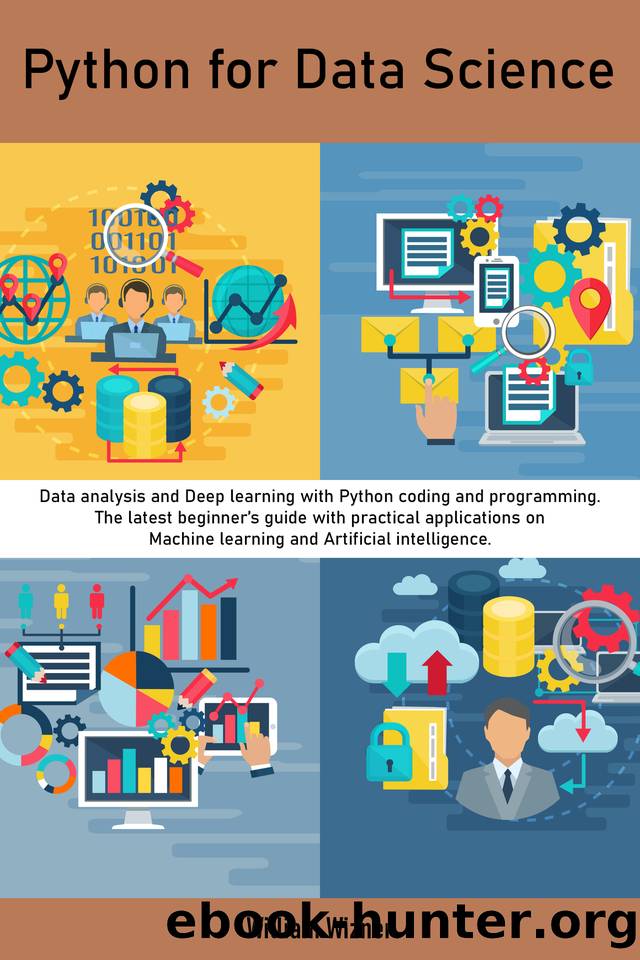Python for Data Science: Data analysis and Deep learning with Python coding and programming. The latest beginner's guide with practical applications on Machine learning and Artificial intelligence. by William Wizner

Author:William Wizner [Wizner, William]
Language: eng
Format: azw3
Published: 2020-07-20T16:00:00+00:00
large_array = np. arrange (0,100,2). reshape (5,10)
large_array # show
Out []: array ([[ 0, 2, 4, 6, 8, 10, 12, 14, 16, 18],
[20, 22, 24, 26, 28, 30, 32, 34, 36, 38],
[40, 42, 44, 46, 48, 50, 52, 54, 56, 58],
[60, 62, 64, 66, 68, 70, 72, 74, 76, 78],
[80, 82, 84, 86, 88, 90, 92, 94, 96, 98]])
Tip: Try grabbing single elements and rows from random arrays you create. After getting very familiar with this, try selecting columns. The point is to try as many combinations as possible to get you familiar with the approach. If the slicing and indexing notations are confusing, try to revisit the section under list or string slicing and indexing.
Click this link to revisit the examples on slicing:
Download
This site does not store any files on its server. We only index and link to content provided by other sites. Please contact the content providers to delete copyright contents if any and email us, we'll remove relevant links or contents immediately.
Hello! Python by Anthony Briggs(10198)
The Mikado Method by Ola Ellnestam Daniel Brolund(10106)
OCA Java SE 8 Programmer I Certification Guide by Mala Gupta(10043)
Algorithms of the Intelligent Web by Haralambos Marmanis;Dmitry Babenko(8588)
Sass and Compass in Action by Wynn Netherland Nathan Weizenbaum Chris Eppstein Brandon Mathis(7969)
Grails in Action by Glen Smith Peter Ledbrook(7942)
Test-Driven iOS Development with Swift 4 by Dominik Hauser(7900)
The Well-Grounded Java Developer by Benjamin J. Evans Martijn Verburg(7841)
Windows APT Warfare by Sheng-Hao Ma(7664)
Layered Design for Ruby on Rails Applications by Vladimir Dementyev(7393)
Blueprints Visual Scripting for Unreal Engine 5 - Third Edition by Marcos Romero & Brenden Sewell(7293)
Secrets of the JavaScript Ninja by John Resig Bear Bibeault(6739)
Kotlin in Action by Dmitry Jemerov(5369)
Solidity Programming Essentials by Ritesh Modi(4469)
Hands-On Full-Stack Web Development with GraphQL and React by Sebastian Grebe(4400)
WordPress Plugin Development Cookbook by Yannick Lefebvre(4279)
Unity 3D Game Development by Anthony Davis & Travis Baptiste & Russell Craig & Ryan Stunkel(4188)
Functional Programming in JavaScript by Mantyla Dan(4170)
The Ultimate iOS Interview Playbook by Avi Tsadok(4162)
